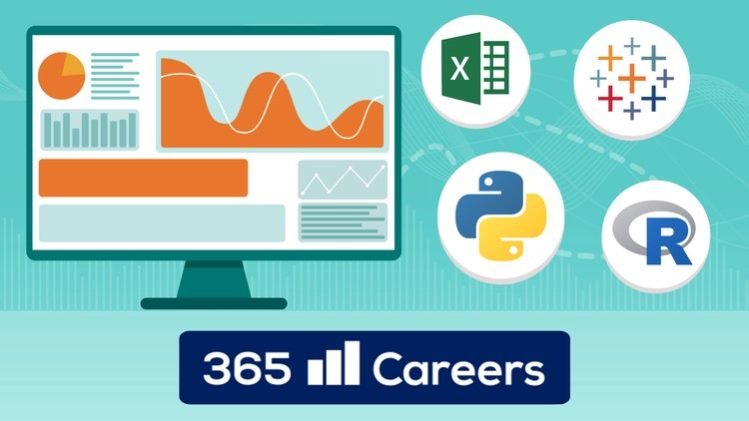Do you want to learn how to create a rich variety of graphs and charts?
Do you wish you had superior data interpretation skills?
Does your workplace require data visualization proficiency?
Yes, yes, and most likely yes.
The Complete Data Visualization Course is here for you with TEMPLATES for all the common types of charts and graphs in Excel, Tableau, Python, and R!
These are 4 different data visualization courses in 1 course!
Whether your preferred environment is Excel, Tableau, Python, or R, this course will enable you to start creating beautiful data visualizations in no time!
You will not only learn how to create charts, but also how to label them, style them, and interpret them. Moreover, you will receive immediate access to all templates we work with in the lessons. Simply download the course files, replace the dataset, and amaze your audience!
Graphs and charts included in The Complete Data Visualization Course:
-
Bar chart
-
Pie chart
-
Stacked area chart
-
Line chart
-
Histogram
-
Scatter plot
-
Scatter plot with a trendline (regression plot)
We live in the age of data. And being able to gather good data, preprocess it, and model it is crucial.
However, there is nothing more important than being able to interpret that data. And data visualization allows us to achieve just that.
Data visualization is the face of data. Many people look at the data and see nothing. The reason for that is that they are not creating good visualizations. Or even worse – they are creating nice graphs but cannot interpret them accurately.
This course will tackle both of these problems. We will make sure you can confidently create any chart that you need to provide a meaningful visualization of the data you are working with. Not only that – you will be able to label and style data visualizations to achieve a ready-for-presentation graph. Furthermore, through this course, you will learn how to interpret different types of charts and when to use them. We will provide examples of great charts as well as terrible charts. We will spare no effort in transforming you into the key person for data visualizations in any team.
We are confident that by the time you complete this course, creating and understanding data visualizations will be a piece of cake for you!
What makes this course different from the rest of the Data Visualization courses out there?
-
4 different data visualization courses in 1 course – we cover Excel, Tableau, Python and R
-
Ready-to-use templates for all charts included in the course
-
High-quality production – Full HD and HD video and animations crafted professionally by our experienced team of visual artists
-
Knowledgeable instructor team with experience in teaching on Udemy
-
Complete training – we will cover all common graphs and charts you need to become an invaluable member of your data science team
-
Excellent support – if you don’t understand a concept or you simply want to drop us a line, you’ll receive an answer within 1 business day
-
Dynamic – we don’t want to waste your time! The instructor sets a very good pace throughout the whole course
Why do you need these skills?
-
Salary/Income – careers in the field of data science are some of the most popular in the corporate world today. Literally every company nowadays needs to visualize their data, therefore the data viz position is very well paid
-
Promotions – being the person who creates the data visualizations makes you the bridge between the data and the decision-makers; all stakeholders in the company will value your input, ensuring your spot on the strategy team
-
Secure future – being able to understand data in today’s world is the most important skill to possess and it is only developed by seeing, visualizing and interpreting many datasets
Please bear in mind that the course comes with Udemy’s 30-day money-back guarantee. And why not give such a guarantee? We are certain this course will provide a ton of value for you.
Let’s start learning together now!
Introduction
Why Learn Data Visualization






